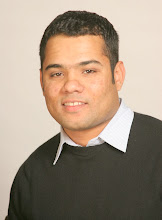The Final Email to the i4i Team
Hello i4i'ers -
This email is the "official" end of the project. It has been a great pleasure to work with each of you during the last few months. We worked hard, yet had fun! We over-delivered and this is good. Here are our final work products:
1. Baloh, P., Jha, S., Desouza, K.C., Kim, J.Y., Awazu, Y., Dombrowski, C. “Building Partnerships for Innovation,” Technical Report, # I4I-I3M-InnovBusPart-1, Institute for Innovation in Information Management, The Information School, University of Washington, October, 2006, 35 pages.
2. Desouza, K.C., and Dombrowski, C. “Six Case Studies on Organizational Innovation,” Technical Report, # I4I-I3M-InnovCases-1, Institute for Innovation in Information Management, The Information School, University of Washington, October, 2006, 30 pages.
3. Dombrowski, C., Kim, J.Y., Desouza, K.C., Braganza, A., Papagari, S., Baloh, P., and Jha, S. “Elements of Innovative Cultures,” Technical Report, # I4I-I3M-InnovCult-1, Institute for Innovation in Information Management, The Information School, University of Washington, October, 2006, 20 pages.
4. Desouza, K.C., Dombrowski, C., Awazu, Y., Baloh, P., Papagari, S., Kim, J.Y., and Jha, S. “Crafting Organizational Innovation Processes,” Technical Report, #I4I-I3M-InnovProc-1, Institute for Innovation in Information Management, The Information School, University of Washington, August, 2006, 35 pages.
5. Desouza, K.C., Awazu, Y., Jha, S., Dombrowski, C., Papagari, S., Baloh, P., and Kim, J.Y. “Customer-Driven Innovation,” Technical Report, #I4I-I3M-CustInnov-1, Institute for Innovation in Information Management, The Information School, University of Washington, August, 2006, 28 pages.
6. Awazu, Y., Baloh, P., Desouza, K.C., Wecht, C.H., Kim, J.Y., and Jha, S. “Opening up Innovation through Information-Communication Technologies,” Technical Report, #I4I-I3M-InnovICT-1, Institute for Innovation in Information Management, The Information School, University of Washington, July, 2006, 16 pages.
All in all, this project has generated over 160 pages of content. The sponsors of the research are thrilled.
With the end of one project, we have the beginning of a new project. I have put a new proposal under review for funding. Should we get the funding, I will be in touch with each of you to join the next effort. The next effort will look at linking innovation to business value and also communicating the value of business innovation.
Thanks once again for all your hard work, and now let us wait for all the papers to get accepted at journals.
Get some rest now and thanks once again for making this project a success!
Cheers,
Kev





